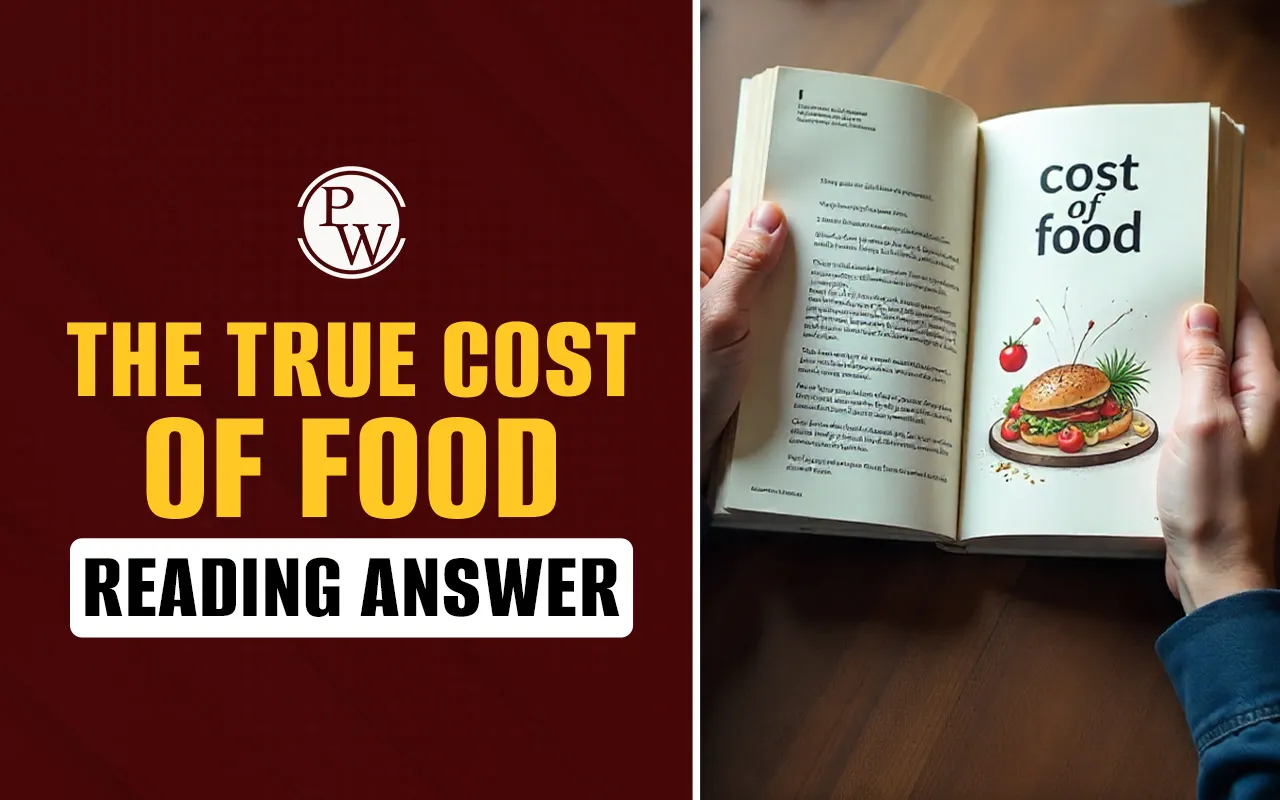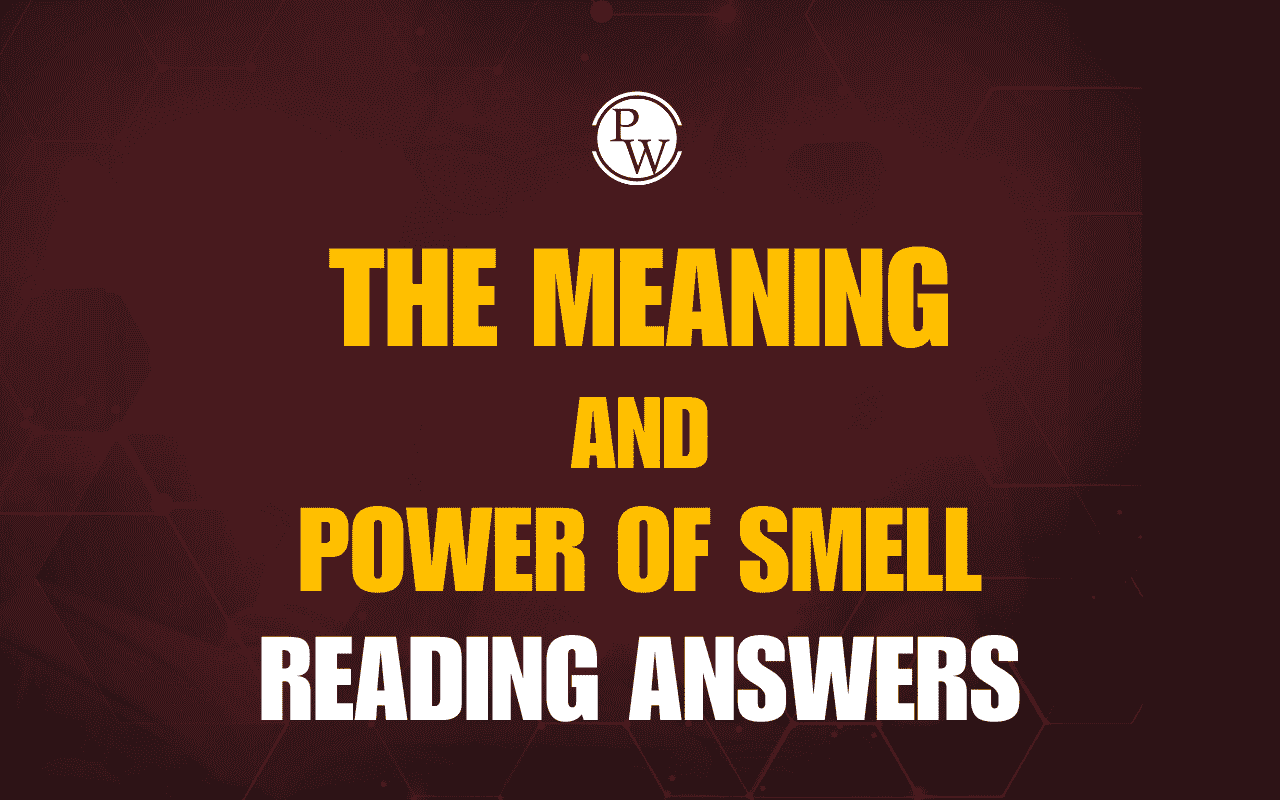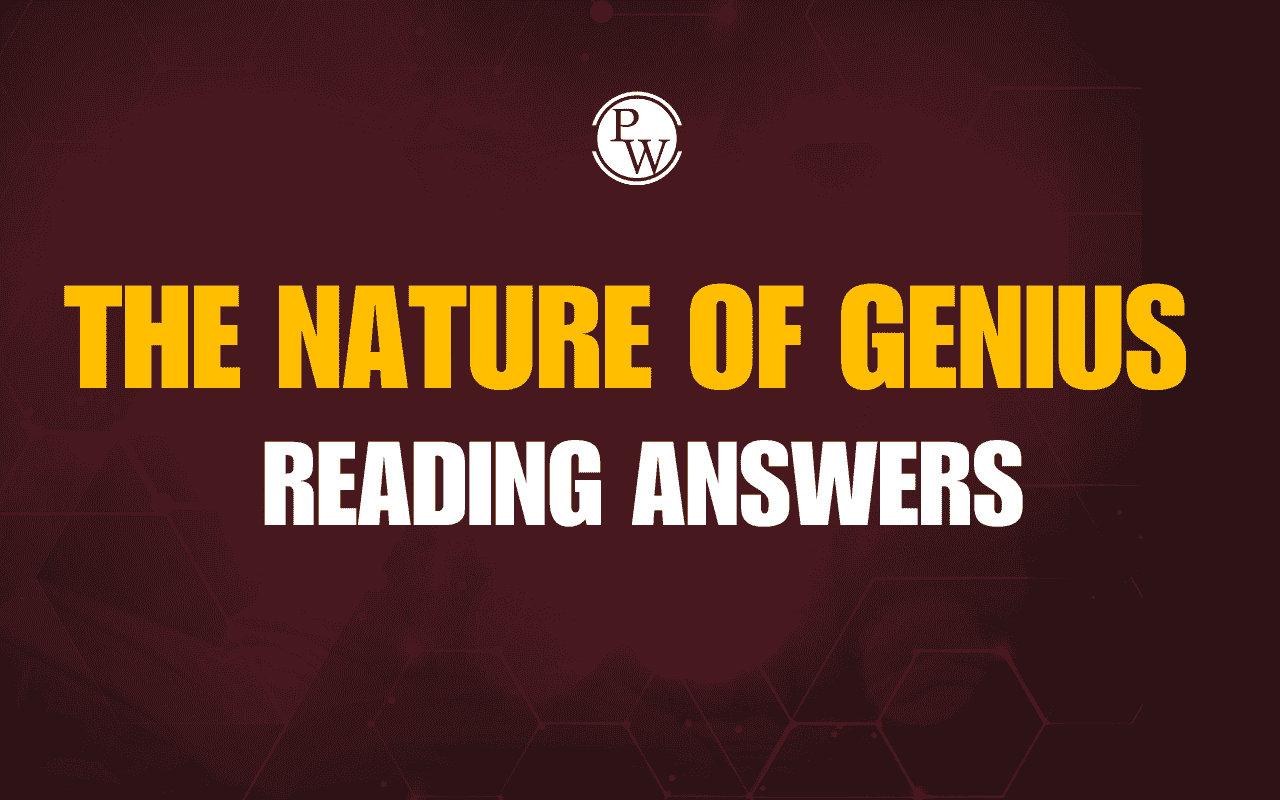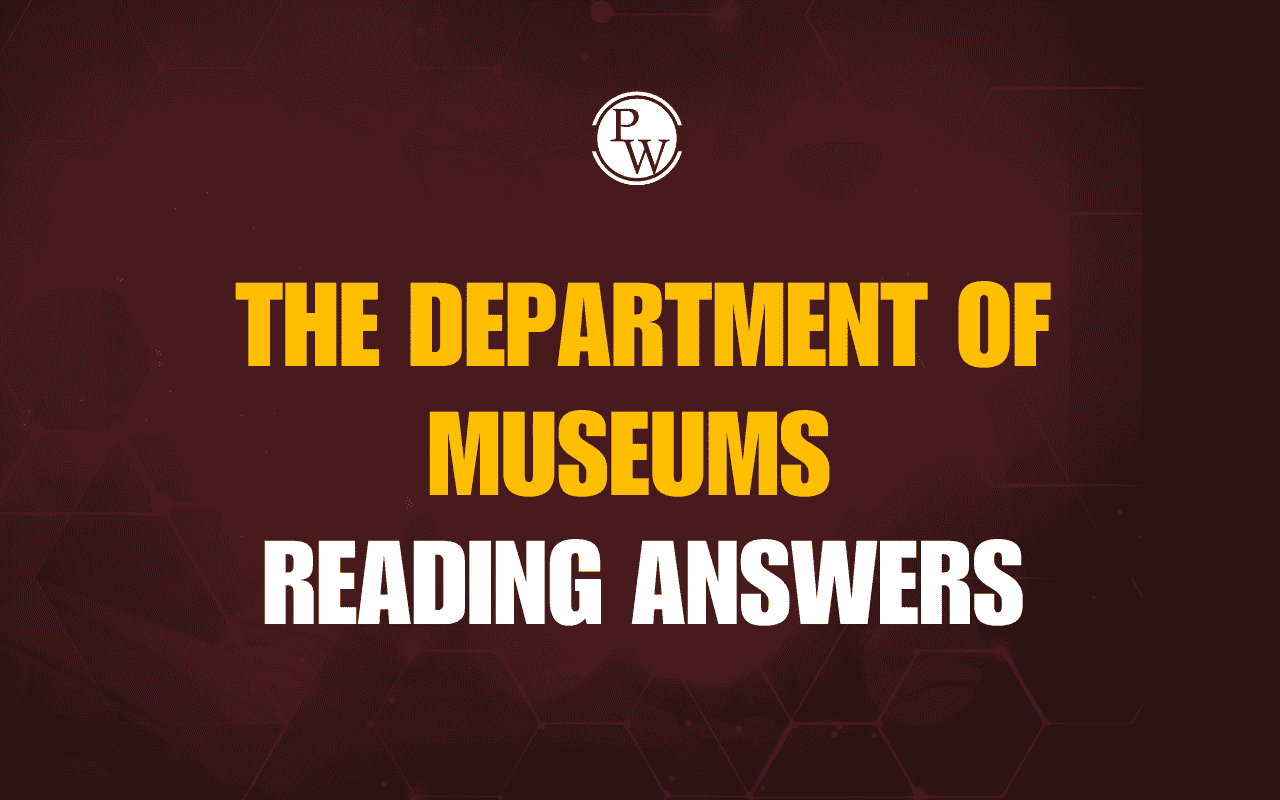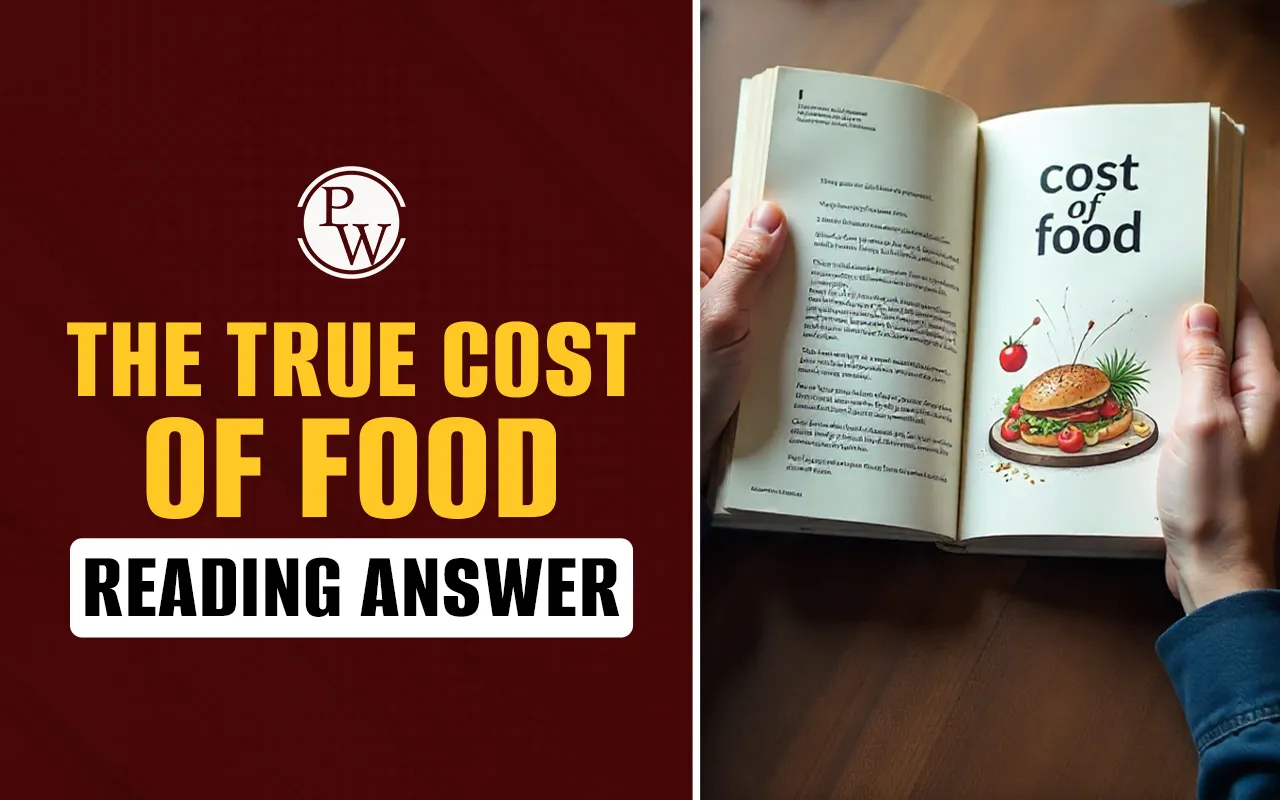
The True Cost Of Food Reading Answers highlights the hidden price we pay for modern farming. It explains environmental damage, soil loss, and health risks. Such passages often appear in IELTS Reading Topics to test critical thinking. Learners face challenges like IELTS Reading multiple choice questions or IELTS Reading Sentence Completion Questions.
Knowing the IELTS Reading Test Format and common IELTS Reading Question Types helps. Guides like How to Handle Multiple Choice Questions in IELTS Reading can improve accuracy. With the right IELTS READING structure, practice, and tips on How to improve IELTS Reading Score, candidates aim for a higher IELTS Reading Band Score.
IELTS The True Cost Of Food Reading Answers With Passage
The True Cost Of Food Reading Answers with passage helps IELTS learners practice reading comprehension. This topic reflects real environmental and social issues. By studying the passage, students understand how questions are framed and how to approach them effectively in the IELTS Reading section.
The True Cost Of Food Reading Passage
Paragraph A
The cost of food has increased over the last forty years. It has reached an extent where people across the globe started to think that the cost of food is expensive, and it is not easy to bring it down in the twenty-first century. However, the cost of food will not be included in a cash transaction. When we look at the West, most food products are cheaper now than in the past. The cost of food in 1960 was not the same as now. The cost reduction results in collateral damage while food production has made the food cost less expensive, inclusive of water pollution, soil degradation, the deterioration of wildlife, the damage to animal well-being and finally, the threat to human health caused mainly by modern agricultural practices.
Paragraph B
The initial step was mechanisation, followed by a large number of chemical fertilisers and pesticides used, then came the monocultures, then livestock rearing, and ultimately, genetic engineering is the current trend. This continuous intensive farming seems to be impossible to stop as it's been going on for the last five decades, and the crop yields of produce have increased exponentially. Apparently, the damage caused might be huge. In the UK, for instance, some of the beautiful farmland birds, like the skylark, the lapwing, the grey partridge, and the corn bunting, have disappeared from the countryside along the stretches, just like the wildflowers and insects. This transition is due to the fact that our food has been produced in the last forty years. Thousands of km of hedgerows and thousands of tons of water vanished from the Earth's landscape. Beyond that, salmon farming has made wild salmon run from different parts of the ocean lochs and rivers of Ireland and Scotland. The most dangerous thing is the depletion of natural soil fertility in many parts of the world due to persistent industrial fertiliser and extensive consumption of pesticide for agriculture, while the development of algae is rapidly growing in lakes because of the fertiliser run-off.
Paragraph C
When we put everything together, it more or less looks like a war zone, however people as consumers hardly make the connection in the dining area. We reached this state of place due to the costs of all damage we made and this is what economists call externalities. It means, they occurred from the outside transaction, for instance, cultivating and giving a field of wheat to a buyer, that is directed by neither farmers nor consumers. For certain community people, it may not even appear to be financial at all, but just aesthetic. And it is nothing but a shameful act, where there is nothing to do with financial aspects. Nevertheless, consumers are not paying for what they eat, are they?
Paragraph D
The cost and price paid to the society are quantifiable and, when it is added up to the overall cost, it becomes a huge amount. To do this, an excellent way was found by Professor Jules Pretty, one of the leading thinkers related to agriculture. He is the Director of the Centre for Environment and Society at the University of Essex. Meanwhile, Professor Pretty and his peer groups estimated the external factors of British agriculture for one specific year. In the process, they summed up the costs of repairing the damage it created and ended up with nearly an amount of 2,456 million euros. This is equivalent to 220 euros for each hectare of land that is arable and permanent pasture, almost as much again as the full government sector and the EU offers financial assistance for British farming in the same year. And analysing all the above factors, it is clear that it was a conservative prediction as told by Professor Pretty.
Paragraph E
The costs involved: 16.5 million euros for cleaning off nitrates; 57 million euros for removing phosphates and unwanted soil; 126 million euros for rebuilding habitats for wildlife animals; 24 million for eradicating bug cryptosporidium mainly from drinking water that is done by commercial companies that make clean water. 122 million euros for removing pesticides; 1115 million euros for reducing gas emissions that lead to severe climate change and climatic conditions; 108 million euros for the erosion of soil and the loss of organic carbon; 176 million euros for preventing food poisoning; finally 609 million euros for treating cattle disease. Thus, Professor Pretty gives a simple yet powerful conclusion from the above is that our food bills are threefold by now. At present, we are paying three different taxes to get our food that is supposed to be cheap. Meanwhile, it will provide more subsidy support to develop intensive farming in modern terms. Lastly, it has to be done to clear the chaos that is caused in these modern days.
Paragraph F
So can the true cost of food be decreasing in the future? Splitting away from the industrial form of agricultural produce as the problem-solving strategy to tackle hunger may be extremely difficult for certain countries, however in countries like the UK, where the requirement to provide food is not so immediate, and the costs and the consequences of intensive farming were witnesses, and it can be feasible if it is executed properly. All governments want to build a sustainable, competitive and inclusive farming and food industries, which will set a path to potential and sustainable rural economy, and highly-developed environmental, socioeconomic, health, and animal development objectives.
Paragraph G
When the industrial type of agricultural farming is removed and replaced by something, what would be the result? Professor Pretty thinks that agricultural farming organically might be a big leap in thinking and practices for millions of people who practise agriculture. Moreover, the price rate might put the food products beyond the imagination for many poorer consumers as the price would be expensive. To overcome this, he suggests jump-starting a ‘Greener Good Standard’, which would eventually move the market towards sustainable environmental practices compared to the present system, not wanting the entire resources for organic farming and food production. This kind of standard would convince many farmers to leave the different kinds of farming (some are unethical), including agrochemical use, soil quality, facilitating land, water and energy usage, food security and more importantly animal health. This will surely take a long time to see, he says, transforming consumers and farmers into sustainable agriculture that ensures a brighter future.
Sample Questions on IELTS The True Cost Of Food Reading Answers
Sample questions on The True Cost Of Food Reading Answers guide learners in handling different IELTS Reading question types. From multiple choice to sentence completion, practicing these questions improves accuracy. It also builds confidence to manage time and structure answers better in the IELTS Reading exam.
| Sample Questions on IELTS The True Cost Of Food Reading Answers | |
| Question Type | Question / Instruction |
| Multiple Choice | What does the passage suggest is the hidden effect of cheaper food production? |
| True/False/Not Given | Modern agriculture practices are the main reason for soil fertility loss worldwide. |
| Matching Information | Match the following with their impact: 1. Salmon farming 2. Fertiliser run-off 3. Hedgerow removal |
| Sentence Completion | Economists refer to the hidden costs of agriculture as ________. |
| Short Answer Question | Who estimated the external costs of British agriculture at 2,456 million euros? |
| Multiple Choice | According to Professor Pretty, how much was the estimated cost per hectare of farmland? |
| True/False/Not Given | Consumers directly pay for the hidden damages of farming in their grocery bills. |
| Matching Headings | Match headings: 1. Costs of damage 2. Government goals 3. Sustainable alternative |
| Sentence Completion | Professor Pretty concludes that our food bills are effectively ______ times higher. |
| Short Answer Question | What standard did Professor Pretty suggest to promote sustainable farming? |
IELTS The True Cost Of Food Reading Answers
The True Cost Of Food Reading Answers is an important practice resource for IELTS candidates. It covers topics linked to farming, environment, and health. By attempting this passage, students can strengthen reading skills, identify question patterns, and improve their IELTS Reading Band Score with consistent practice.
| IELTS The True Cost Of Food Reading Answers | ||
| Question Type | Question / Instruction | Answer |
| Multiple Choice | What does the passage suggest is the hidden effect of cheaper food production? | Cheaper food production causes environmental damage, soil degradation, water pollution, and health risks. |
| True/False/Not Given | Modern agriculture practices are the main reason for soil fertility loss worldwide. | True – Paragraph B explains that fertiliser and pesticide use reduces soil fertility globally. |
| Matching Information | Match the following with their impact: 1. Salmon farming 2. Fertiliser run-off 3. Hedgerow removal | 1 → Wild salmon decline; 2 → Algae growth in lakes; 3 → Loss of farmland birds and insects. |
| Sentence Completion | Economists refer to the hidden costs of agriculture as ________. | externalities – Paragraph C defines these hidden, indirect costs. |
| Short Answer Question | Who estimated the external costs of British agriculture at 2,456 million euros? | Professor Jules Pretty – Paragraph D mentions his estimation for one year of British farming. |
| Multiple Choice | According to Professor Pretty, how much was the estimated cost per hectare of farmland? | 220 euros per hectare – Paragraph D states this figure as the external cost per hectare. |
| True/False/Not Given | Consumers directly pay for the hidden damages of farming in their grocery bills. | False – Paragraph C explains consumers don’t directly pay for these external costs. |
| Matching Headings | Match headings: 1. Costs of damage 2. Government goals 3. Sustainable alternative | 1 → Paragraph E; 2 → Paragraph F; 3 → Paragraph G |
| Sentence Completion | Professor Pretty concludes that our food bills are effectively ______ times higher. | three – Paragraph E concludes that food bills are effectively tripled by hidden costs. |
| Short Answer Question | What standard did Professor Pretty suggest to promote sustainable farming? | Greener Good Standard – Paragraph G recommends this to encourage sustainable practices. |
Guidance to PW IELTS Prep
IELTS Online Courses is a great initiative Physics Wallah took to help IELTS aspirants better prepare for the exam. Follow our below pages to learn more about the IELTS exam.| IELTS Reading Band Score | IELTS Listening Band Score |
| IELTS Speaking Band Score | IELTS Writing Band Score |
IELTS The True Cost Of Food Reading Answers FAQs
What does externalities in agriculture mean?
Who calculated the external costs of British farming?
Why has cheaper food production caused problems?
How much does external damage cost per hectare?
What standard promotes sustainable agriculture?

